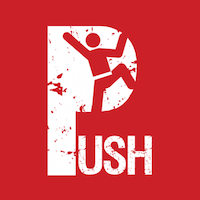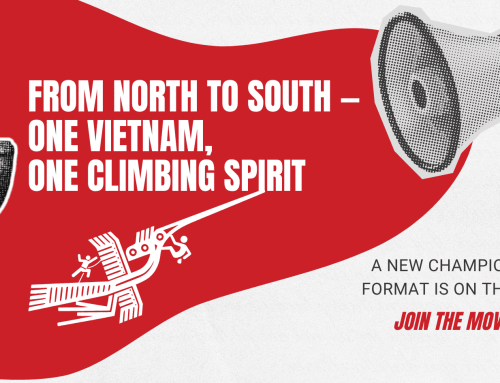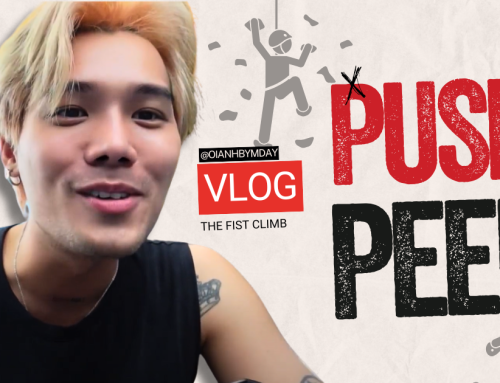Auto belays are brilliant. Let’s be clear about that. They’re always waiting for you no matter what time you turn up, they let you play right away, they’re never in a bad mood, or late, and they never let their attention slip.
Auto belays are a gym climber’s best friend, but every gym climber at some point starts to wonder if there’s maybe something more out there. Good news; there is, and a whole lot more of it is coming to Push.



Top Rope vs Lead Climbing
Rather inconsiderately most mountains don’t naturally come equipped with auto belays so climbers use protections; pitons, bolts, quickdraws, and cams to attach themselves to the wall so that they don’t end up as pâté if they fall. If you’re using a rope that passes through an anchor at the top of the wall, and is held safely by your belay buddy on the ground then you’re top roping. If there isn’t an anchor point for a rope up above you when you start, perhaps because (can you feel the excitement build) nobody has gone up there before, then you’re going to lead climb.
In lead climbing you fix yourself to the wall as you go. That could be by attaching to bolts (take a close look at the wall at Push and you’ll see them) with a quickdraw or it could be by using removable cams as you go (see Sport vs Trad below*). As you progress you clip on to the next bolt up or fix your protection to the wall directly and that means that if you slip or miss that grip then you only fall as far as your last anchor point.


Falling
Ah, yes, falling. We had to come to that because it really is the biggest difference between top roping and lead climbing. When you’re top roping your trusty belay buddy has the rope and if they’re really on their game you could just let go of the wall and not fall because they’ve got you courtesy of that rope running up to the anchor above you and from there to your harness. If you fall at all you won’t fall far. If you do find you’re falling further than you’d like when top roping then it’s time to get a new belay buddy.
Lead climbing however has not rope leading up to the top from you so you will fall to the point where you last anchored on the way up. Actually it’s worse than that; you will fall to that point and then the same distance again because that’s the length of rope you had paid out climbing up from that last anchor. So if you are three metres up from your last anchor and you slip you will fall six metres. Ouch. That’s what they call a whipper. Lead climbing ropes are usually dynamic – slightly elastic – so they stretch a little to absorb that but you’re still going to feel it. Lead climbers also have to be very mindful of where the rope is – if you fall with the rope behind your leg for example there’s a real risk that you will catch on it and end up inverted. That’s not only going to be a shock to the system, it’s also going to empty all your beer money out of your trousers
So why do it?
So why would you? Mostly because of the clarity of mind that comes with the sense of doing it for real. Knowing that you will fall to that last anchor focuses the mind, and sharpens the senses. Many lead climbers say that it not only injects a little extra adrenaline but also improves their climbing skills and teaches them more about their limits.
So if you want to see a bit of lead climbing in action come along to Onsight Friday and if you think you could develop a taste for this then watch this space because Lead Lessons are in the Push pipeline.


Sport Climbing vs Trad Climbing
Lead climbing can be sport or trad since the key distinction here is the use of bolts already on the route.
If the way your protections anchor to the rocks is removable, like a spring loaded cam that wedges into rock cracks, then you’re a trad climber. If you’re using quickdraws to hook on to bolts already fixed on the route then you’re a sport climber. You may hear people arguing the merits of both and we may come back to that for the moment suffice to say that it’s handy for its fans that ‘trad’ rhymes with ‘rad’ and ‘sport’ doesn’t. Trad climbing also involves way more equipment, which can be fiddly but, hey, toys.
Words by Steve Shipside.



